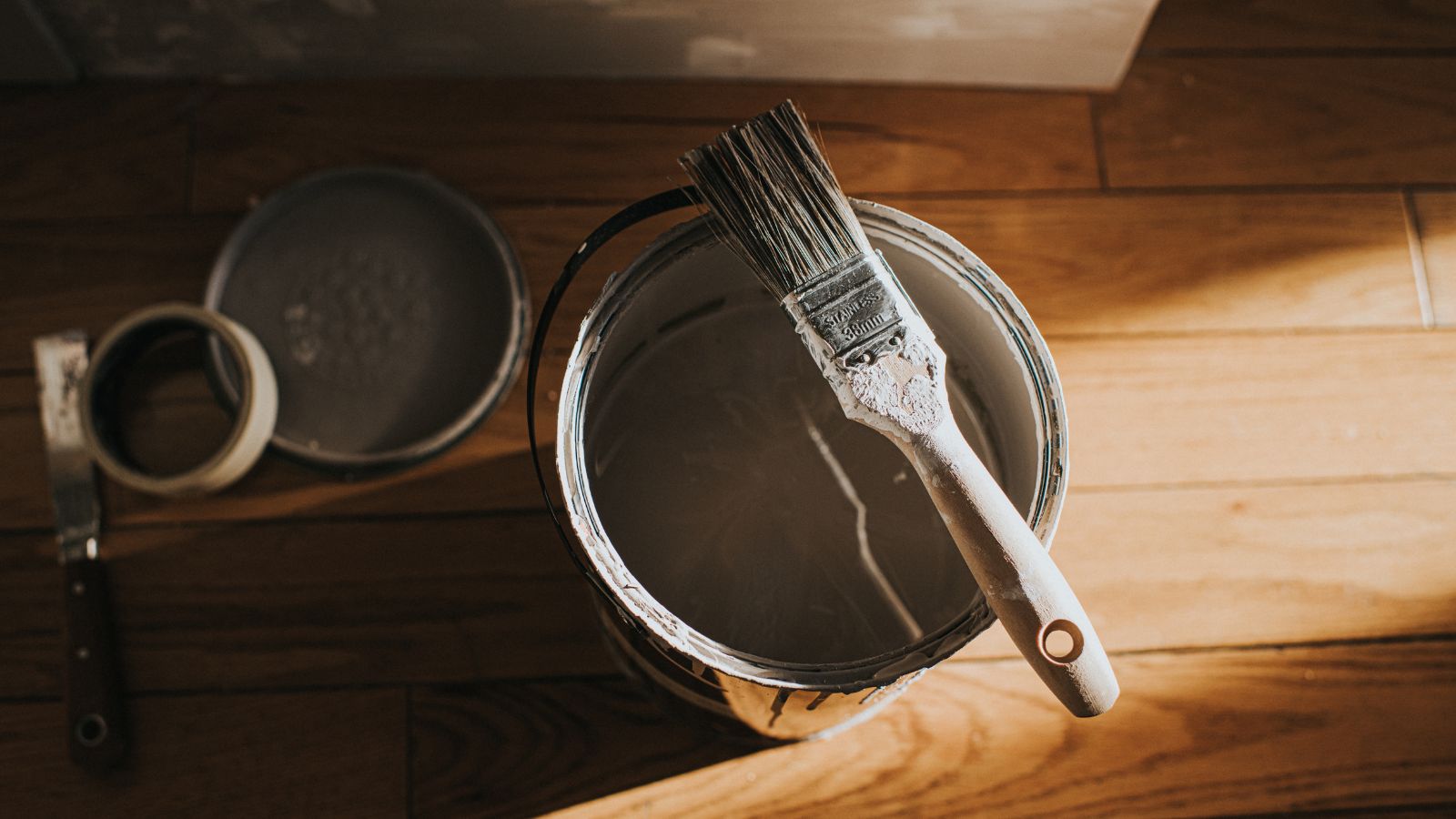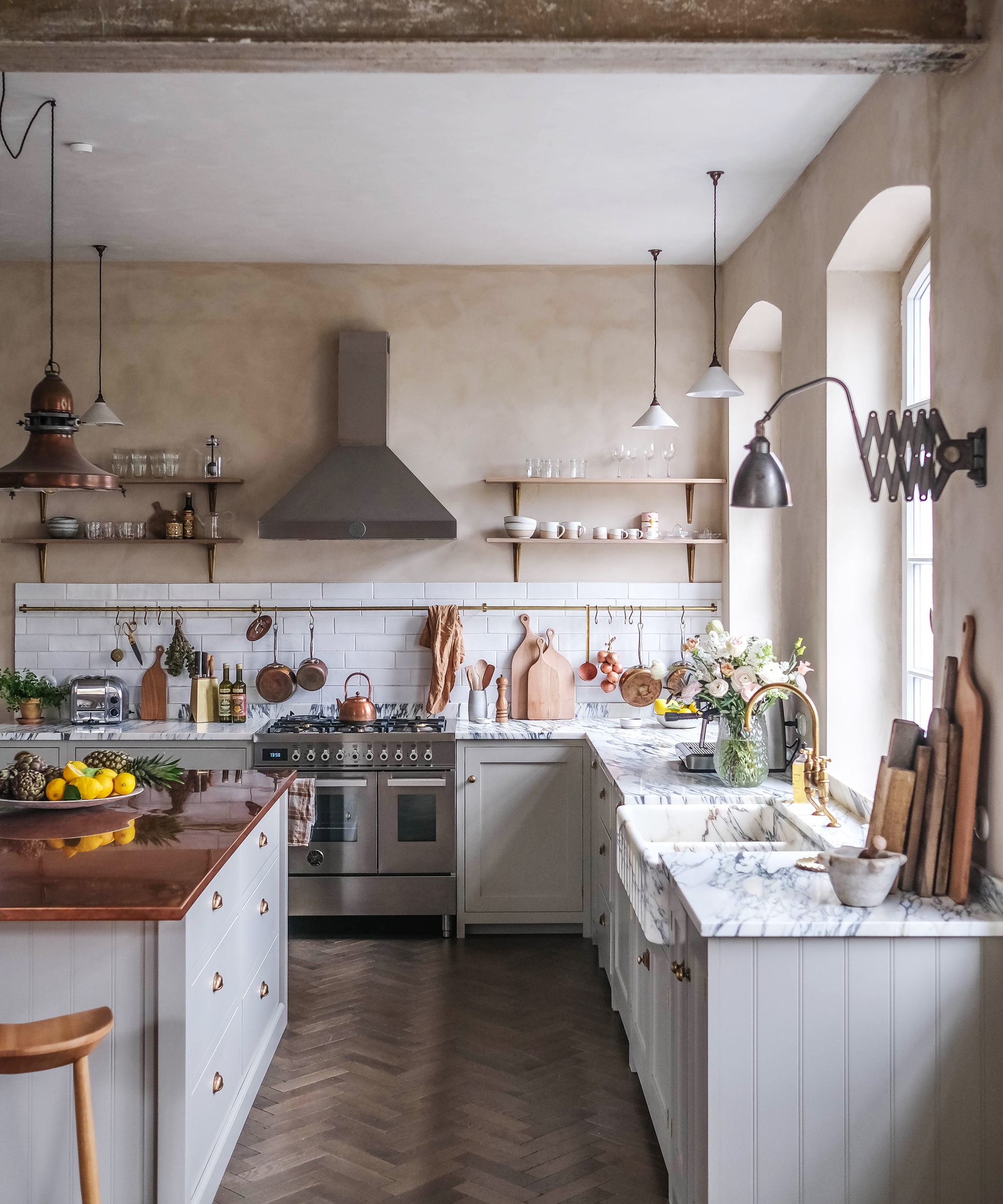How to texture a wall – 5 expert methods for intriguing wall textures
These quick wall texturing tips can be done yourself – and offer a timeless texture to any space


When redecorating, many of us think about repainting walls or putting up new wallpaper, but texturing, when done right, can offer some lovely variation to flat walls.
Textured wall ideas are increasingly on trend, and the tactile finishes you can create are a great way to add some visual intrigue to a space without needing to completely rethink the layout, furniture, or decor within it. Plus, of course, texturing walls offers the opportunity to hide and disguise lumps, bumps and imperfections.
Here, professional decorators and designers have shared a few of their favorite methods for texturing walls so you can create a feature that is as good to touch as it is to look at.
How to texture a wall
Besides using textured paint in your home, there are a whole host of ways to add texture, both visual texture through methods like sponging on paint rather than rolling, and tangible texture, as with the methods professional designers have shared below:
1. Use a tactile wallpaper

One of the simplest ways to add texture to your walls is to use a textured wallpaper, either opting for a printed or colored wallpaper or selecting an option you can paint over, adding your own color to tailor it to the room's existing features, suggests Artem Kropovinsky, interior designer and founder of NYC studio, Arsight.
This is a great option for those of us that don't want to experiment with powders, pastes, or sprays indoors.

Based in New York, Artem Kropovinsky, founder of Arsight, has a decade of global design experience. Prioritizing minimalism, sustainability, and authenticity, Artem, alongside his team of professionals, works on projects in the US and worldwide.
2. Use a texturing roller
Anyone who has painted a room before knows how to paint with a roller, so it makes sense to turn to these familiar tools to help texture a space. And texturing walls is the same as texturing a ceiling, without the challenge of painting above your head.
Design expertise in your inbox – from inspiring decorating ideas and beautiful celebrity homes to practical gardening advice and shopping round-ups.
Shanade McAllister-Fisher, interior designer and founder of the eponymous design studio suggests looking for rollers with unique textures, such as stippling or sponge-like surfaces which enable you to create captivating patterns and effects, bringing a sense of artistry to your walls.
‘For example, a stippling roller creates a delicate speckled effect that is perfect for adding a slight wash or texture to white walls without adding too much color, while a sponge roller imparts a more organic and rustic feel that is perfect for a farmhouse or Mediterranean style kitchen, imitating natural stone.
'The key is to add variety, so I recommend playing around with different roller techniques, applying varying pressure and angles to achieve the desired texture and visual impact,’ she says.
Texturing Wall Roller | $12.99 at Amazon
This texturing wall roller comes in a range of different texture options, making it an ideal tool for applying wall textures using your standard emulsion wall paint. Made from silicone, they are also super easy to clean afterward too.
3. Layer on a concrete compound

An alternative to painting or wallpapering is playing with alternative mediums, such as concrete, to provide interest and use texture in interior design. Concrete walls offer a modern, industrial texture and can easily be achieved with some drywall compound and a trowel, suggests Chris Campos, a contractor at Gold Coast Bricklayers.
‘These trowel-on products can be applied to concrete, drywall, tiles, compressed sheeting, and other substrates. You can even trowel directly over a tiled bathroom wall and save on demolition and removal costs,’ he adds.
‘Depending on the finish you’re trying to achieve, it can be troweled on for a rougher, industrial look, or troweled and polished to achieve a more refined texture.’
4. Consider a spray on, paint over, texturizer
For a more defined texture than rolling without having to re-wallpaper, a textured spray such as this from Walmart, could be the way to go, continues Artem Kropvinsky. These can be left to dry and then painted over.
When working with these types of products, just make sure to wear a mask and goggles, like these from Amazon, to protect your eyes and airways, and keep windows and doors open for good ventilation.
5. Have a professional apply a brick facade

One of the most timeless textural accent walls ideas is to use brick or brick facades – although this may be more a job for professionals than a DIY if you are unfamiliar with bricklaying or tiling.
‘While brick in a running bond pattern is expected, you can spice up rooms with an unexpected bond pattern like a stacked bond for modern appeal or herringbone for a rustic look,’ suggests Tim Leese of premium brick specialists, Glen-Gery.
FAQs
What is the easiest wall texture to use?
The simplest wall texture to achieve yourself is orange-peel texture. This is because it is affordable and easy to apply, making it ideal for beginners. This texture is also an understated option, so it is ideal for experimenting with alternative wall coverings without committing to a stand-offish effect that you may not like after full application.
What are the disadvantages of textured walls?
Before texturing your walls, it is worth considering the disadvantages, such as their tendency to collect dust which will mean cleaning the walls will need to be done more frequently. Also, certain texturing materials such as sprays and paints may be difficult to remove if you want to change up your decor, and the fact that some textures, such as popcorn, may give an outdated look to your home.
These wall texturing methods are a great way to add interest to your space, but it is important to take current painting trends and wallpapering trends into consideration to avoid getting stuck with a texture that looks like something from a dated 80s movie.
Using more modern approaches to texturing, such as with timeless bricks, wallpaper, or drywall (or opting for flat texture through painting techniques such as limewashing) is a safer, and overall more attractive option for your home.

Chiana has been at Homes & Gardens for two years and is our resident 'queen' of non-toxic living. She spends most of her time producing content for the Solved section of the website, helping readers get the most out of their homes through clever decluttering, cleaning, and tidying tips. She was named one of Fixr's top home improvement journalists in 2024.
